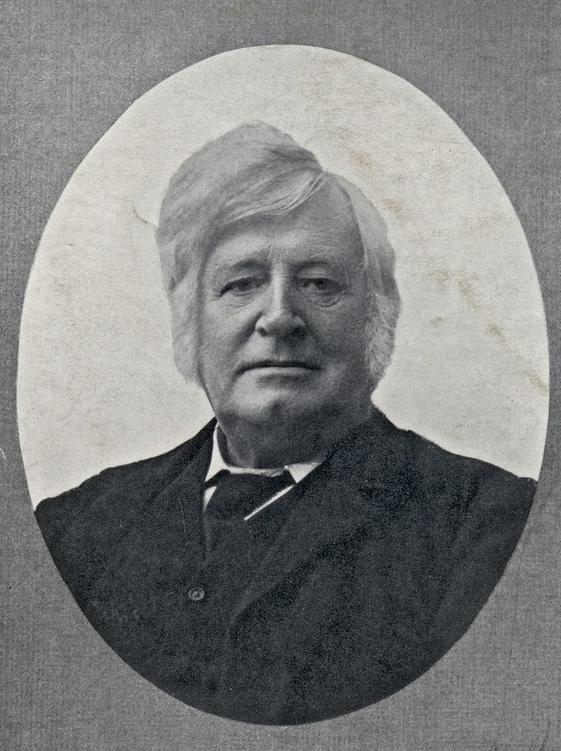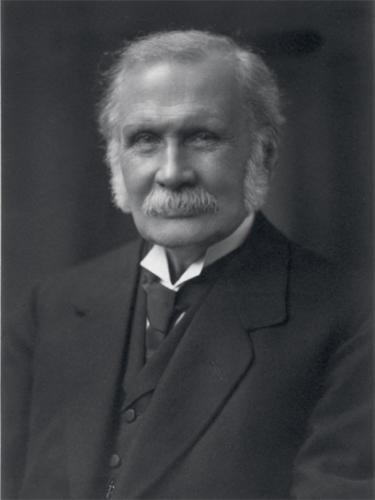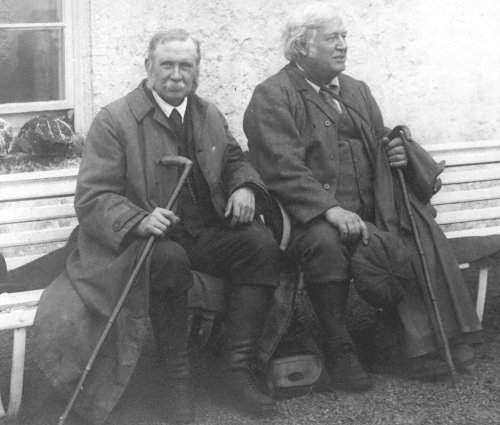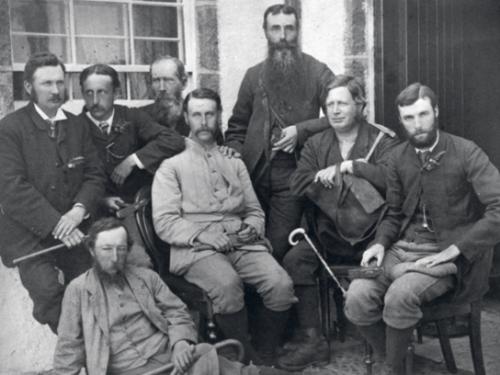<Back to Index>
- Geologist Benjamin Neeve Peach, 1842
- Geologist John Horne, 1848
PAGE SPONSOR


Benjamin Neeve Peach, FRS (6 September 1842 - 29 January 1926) was a British geologist.
He was born at Gorran Haven in Cornwall to Charles William Peach, an amateur British naturalist and geologist. Ben was educated at the Royal School of Mines in London and then joined the Geological Survey in 1862 as a geologist, moving to the Scottish branch in 1867. He is best remembered for his work on the Northwest Highlands and Southern Uplands with his friend and colleague John Horne, where they resolved the long running debate on the geological formation of the Highlands.
He was elected a Fellow of the Royal Society in 1892 The citation on his candidacy form read: "District Surveyor of the Geological Survey of Scotland. Past President of the Physical Society of Edinburgh. Recipient of the Wollaston Donation Fund of the Geological Society in 1887. For thirty years actively engaged on the Geological survey, during which time he has mapped many of the most complicated districts of Scotland. Has charge of the surveying of the NW Highlands, and has taken the leading part in unravelling the remarkable structural complications of that region. Author of various papers on palaeontological subjects: - 'On some New Crustaceans from the Lower Carboniferous Rocks of Eskale and Liddesdale' (Trans Roy Soc Edin, vol xxx, p. 73); 'On some new species of Fossil Scorpions from the Carboniferous Rocks of Scotland' (ibid, p 399); 'Further Researches among the Crustacea and Arachnida of the Carboniferous Rocks of the Scottish Border' (ibid, p 511); 'On some Fossil Myriapods from the Lower Old Red Sandstone of Forfarshire (Proc Roy Phys Soc Edin, vol vii, p 179). Joint author with Mr J Horne of many papers on stratigraphical and physical geology, including : - 'The Glaciation of the Shetland Isles' (Quart Journ Geol Soc, vol xxxv, p 778); 'The Glaciation of the Orkney Islands' (ibid, vol xxxvi, p 648); 'The Old Red Sandstone of Shetland' (Proc Roy Phys Soc Edin, vol v, p 30); 'The Glaciation of Caithness (ibid, vol vi, p 316); 'Report on the Geology of the North-West of Sutherland' (Nature, vol xxxi, p 31); 'The Old Red Sandstone Volcanic Rocks of Shetland' (Trans Roy Soc Edin, vol xxxii, p 539); 'Report on the Recent Work of the Geological Survey in the North-West Highlands of Scotland, based on the Field Maps of B N Peach, J Horne, W Gunn, C T Clough, L Hinxman, and H M Cadell' (Quart Journ Geol Soc, vol xliv, p. 378). "
He was awarded the Wollaston Medal of the Geological Society in 1921. A monument to the work of Peach and Horne was erected at Inchnadamph, close to the Moine Thrust where they did some of their best known work. The inscription reads: "To Ben N Peach and John Horne who played the foremost part in unravelling the geological structure of the North West Highlands 1883-1897. An international tribute. Erected 1980."
He died in Edinburgh in 1926.


John Horne (1 January 1848 - 30 May 1928) was a Scottish geologist. He was elected a Fellow of the Royal Society in 1900. He was a pupil of Ben Peach.
Horne was born in 1848 near Stirling, Scotland and was educated at Glasgow University. He joined the Scottish Branch of the Geological Survey in 1867 as an assistant and became an apprentice to Benjamin Peach. The two soon became good friends and collaborators. Horne was involved in mapping the Midland Valley. Horne was a logical thinker and writer, complementing Peach's skills of resolving the internal structure of mountains by looking at the surface rocks. After their work in the Highlands, Horne and Peach wrote 'Northwest Highlands Memoir' in 1907. The work is regarded as one of the most important geological memoirs. Horne wrote most of the memoir himself. From 1901 until 1911, John Horne was the Director of the Scottish Branch of the Survey. He died in 1928.
A monument to the work of Peach and Horne was erected at Inchnadamph, close to the Moine Thrust where they did some of their best known work. The inscription reads: "To Ben N Peach and John Horne who played the foremost part in unravelling the geological structure of the North West Highlands 1883-1897. An international tribute. Erected 1980."
